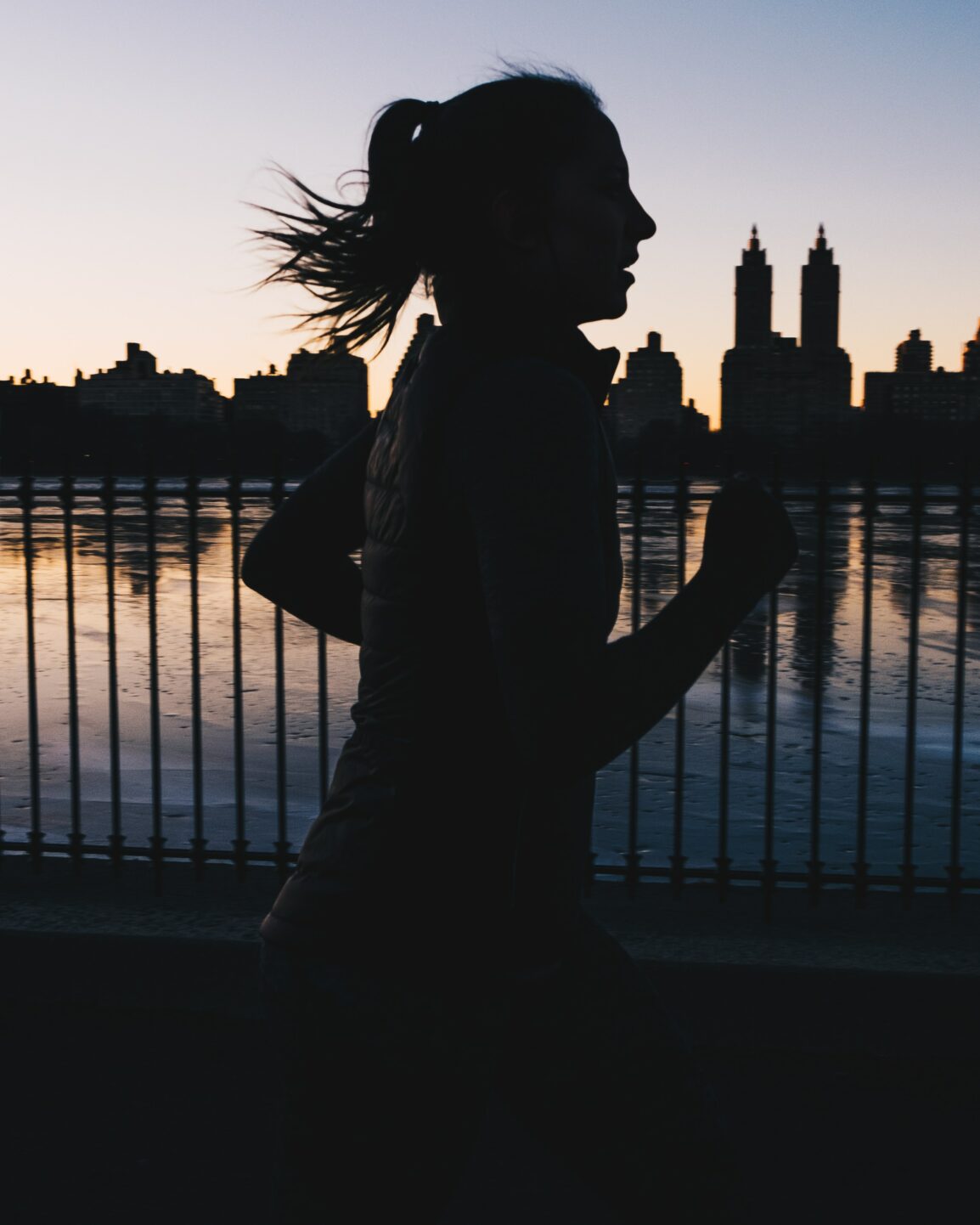Find Motivation to Train in the Cold and Gray Days of Autumn and Winter

In January, I’m always excited to kick-start my training as the march to race season begins. For many long course and competitive athletes, we train year-round, periodizing what we do and blending our training into our life. However, for those of you that aren’t nutters like us, it can be hard to find motivation to train and work on your limiters after your last race or big event. With shortened days bringing less sunlight, cold and dreary and sometimes wet weather outside, and the excitement of the coming holidays, the snooze button, comfy blankets, and dinners out with friends start to take over. So how do we get ourselves out the door?
If you are burned out from a hard season of training and racing, then it’s time to go have some fun. Find the joy of being a kid again. That could be hiking in the fall leaves, riding gravel, cyclocross or even mountain biking. And perhaps it means taking a few weeks to have unstructured gym workouts and more time focused on other joys, like cooking or reading. Regardless, if you’re burned out, find what fans your flames.
Other athletes are more weekend warriors translated to summer warriors. They start training the beginning of May and go through September and then hang up their running shoes or bikes. That is totally fine if you don’t want to get better. But don’t we all want to improve and get faster, stronger, and beat last year’s PB? Well, training in the off season is how you make it happen. Just think about it, with a plan that’s fun and designed for your strengths and weaknesses, you’ll be able to approach next summer already strong and ready to crush your previous bests!
But what do you do if you just can’t get out of bed when it’s still black outside, and you feel like you’ve lost all motivation to train? I’m not gonna lie, as I often say, “It’s Hard When It’s Hard, and It’s Easy When It’s Easy.” If you’ve been there, you totally know what that means. I’d like to give you some tips for when it’s Hard, because in those moments, we all need a little help.
- Know if you’re affected by Seasonal Affective Disorder (S.A.D.) I use a light box prescribed for me to help with the days it stays gray and cloudy. We spoke to Amy Albero, licensed PsychoTherapist and Founder of Revive Center for Wellness about some of the challenges she sees around this and suggestions she gives to those with this challenge.
“Perhaps one of the most important things to keep in mind about Seasonal Affective Disorder (S.A.D.) is that it is real and it can be challenging. Often times, simply acknowledging and validating our own emotional experience can be the first step toward preventing it from negatively impacting our ability to function and do things that we need to do and/or enjoy doing. For many of us, our triggers and emotions may feel unpredictable. However, with S.A.D. we have the benefit of being able to anticipate not only that the seasons will change and the days with get shorter, but also when they are expected to do so. Why is this important? Because it gives us the ability to prepare for it before the change of season has a greater effect on us. Use this time NOW to practice using coping techniques, including a Lightbox, spending time outdoors getting Vitamin D, engaging in activity/exercise, and/or breathing exercises. If we practice utilizing these skills and techniques beforehand, we are better able to access them when we are in more distress. You wouldn’t show up to a race expecting to do well without training for it, right? Managing emotions works the same way!”
- Bundle up in a coat, hat, sweater, gloves, whatever it is that makes you feel comfortable outside in the blah, and go for a walk in the middle of the day, preferably between 12-3 PM. Weekdays go on your lunch hour, and on weekends, well, just go. You’ll find that as you get outside in nature to walk you’ll start to feel better that day, and after a few weeks you’ll crave that fresh air again. I really enjoyed this article that explains how a midday walk really does re-wire us! https://well.blogs.nytimes.com/2015/07/22/how-nature-changes-the-brain/ Over time, you might be able to incorporate mid-day runs in your mix, or find a gym that has walls of windows and go when it’s super sunny outside. That’s one of my favorite tricks when it’s super cold, run on a treadmill or swim in a lane near the windows.
- Find someone to hold you accountable. It drives me bananas when I read, “Find a training buddy” because for so many of us with hectic schedules, the added drama of trying to coordinate with someone who is our pace and is on our schedule is just not realistic. Therefore, find an accountability partner, or coach! Many of my athletes say they need the accountability to get the workouts done. I’m the same way, and it helps knowing someone’s watching me too! It’s too easy to blow off training or a workout when it’s dark outside and my race season is so far off so set yourself up for success.
- Have a morning routine that reduces stress. 10 years ago I’d have laughed at the concept. Now? I wake up nearly an hour earlier every morning to meditate and to do either my hip mobility workout or Yin yoga. Knowing I have the time set aside and that I don’t have to RUSH to get out the door has really changed my attitude about getting up in the dark. If you’re a night person, then simply change this time to evening, and start about an hour before bedtime and then sleep deeply, waking up and following through on your intentions.

